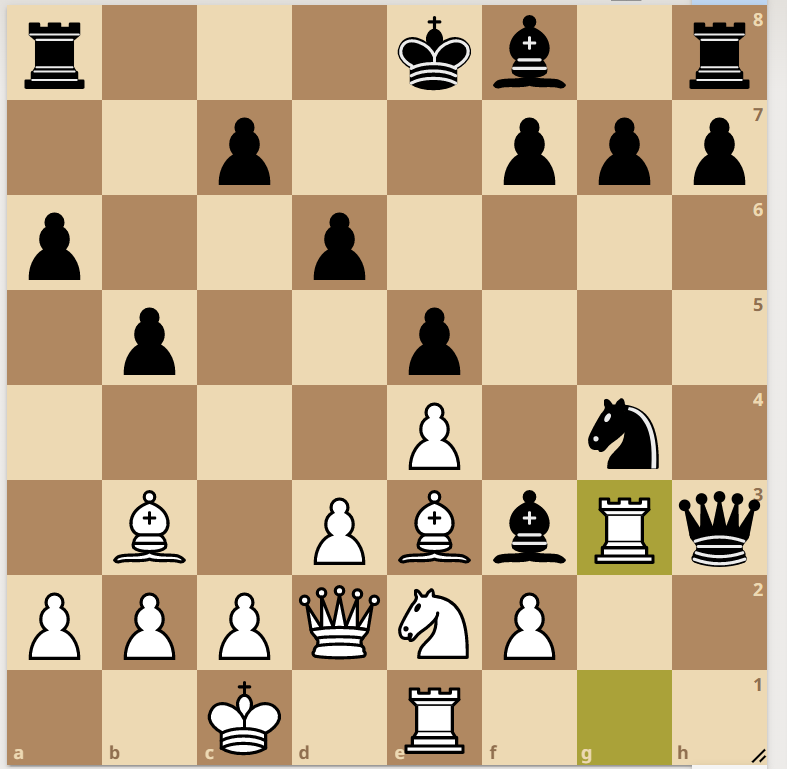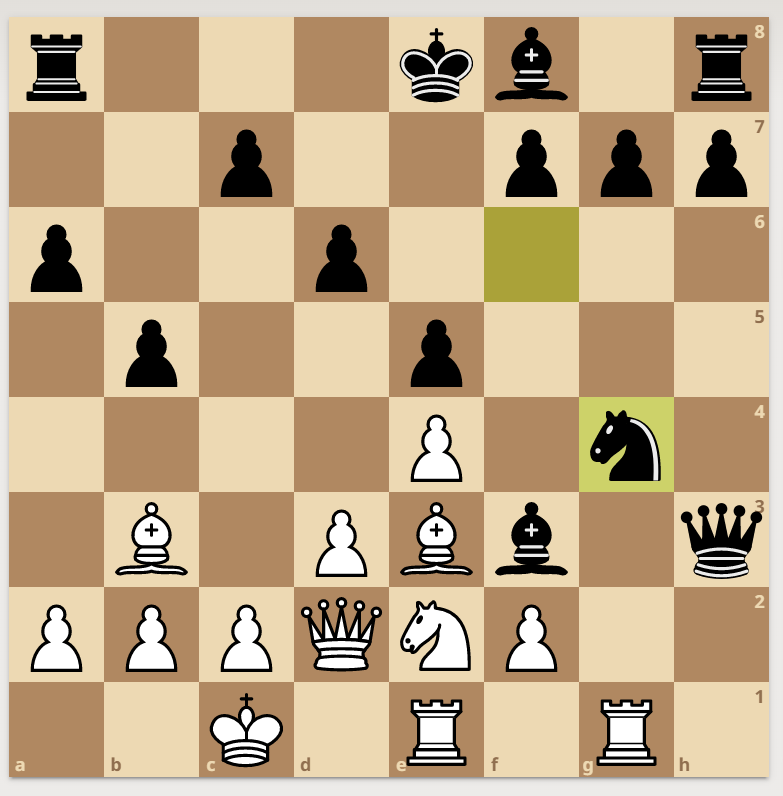Attack the pinned piece
The Chess Tactic of the week is “Attack the pinned piece.”
What is a chess pin?

Before we dive into our weekly chess tactic, we first need to understand the basics. Most importantly, what is a chess pin?
In simplistic terms, a pin is when a less valuable piece cannot be moved without exposing a more valuable piece. A royal pin is when the less valuable piece is blocking a direct attack on either the King or the Queen (example to the right).
What are the benefits of creating a pinned piece?
Pins are extremely powerful for three reasons
- They restrict the movement of your opponents
- They place you in a position to win more material
- A pin simplifies the game board (especially useful in blitz games)
Why should I attack the pinned piece?
A pinned piece is extremely vulnerable due to it’s lack of escape ability. Because the pin piece is restricted, attacking it can often lead to
- Material advantage
- Gain of tempo
- Potential mating scenarios (if a royal pin)
Attacking a pinned piece example I
The most utilized pin comes in some variation of the two knights opening. In this example here the knight is pinned due to an exposed attack on his queen. Before the pin, the knight had four possible blue squares to move to, as well as the possibility of supporting a pawn attack on the red square. But with the bishop pinning the knight, all these possibilities are removed, simplifying the possibilities of your opponent as well as putting pressure on their knight.

Attacking a pinned piece example II
However, to grow your chess skill, you shouldn’t be satisfied with simply allowing your opponent to supply opportunities for your pins. Rather you should create these opportunities for yourself. See below how the black rook can force a royal pin (slide right for the answer).
The black rook taking the bishop forces white to exchange with the g2 pawn. This opens up the G column, creating an absolute pin (I prefer royal pin) on the bishop. Black can simply push the h pawn (h6) to capture the bishop on the next move. Further, this move opens up white’s castle defenses for an attack.
Finding a pin thanks to the careless mistake of your opponent is good, but creating the pin yourself through clever game play is better!
Next time we will review pawn structures. Good luck pinning!













